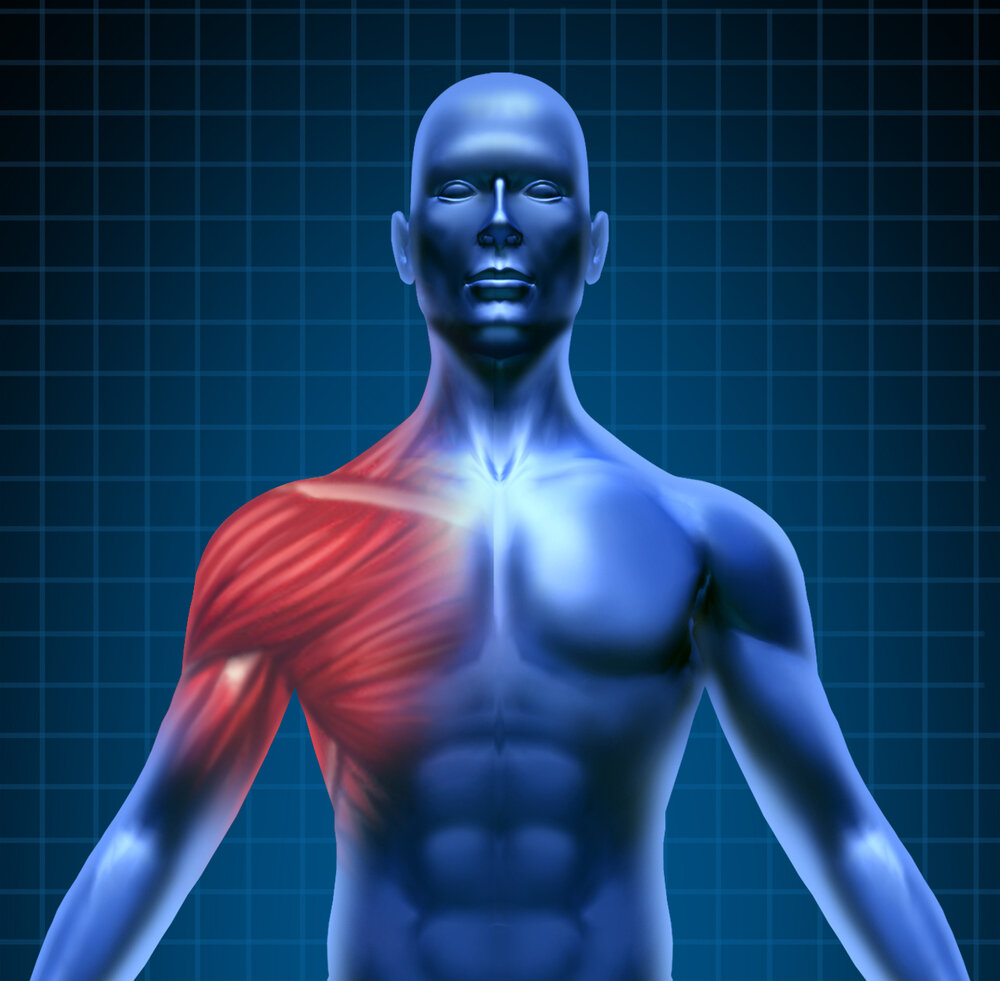Building the Resilient Shoulder
By: Dr. Martha Theirl, Physical Therapist, Cert-CFMA, SFMA L-1
Our shoulders have the greatest amount of movement in the body and are made up of two joints, glenohumeral and acromioclavicular. The glenohumeral joint is between the glenoid labrum, or the cartilage that makes up the end of the scapula (shoulder blade) and the humerus, or upper arm bone. The acromioclavicular joint or AC joint, is between the acromion or top of the scapula and the clavicle, the bone that connects the sternum to the scapula.
The glenohumeral joint is a “ball in socket” joint meaning it looks a little like a golf ball on a tee. It’s stabilized mainly by tendons and ligaments which is great for freedom of movement, but harder for stabilizing loads during that movement. If you’re looking for a great introduction to shoulder strength, check out this blog post on some of the most common shoulder strengtheners.
Strength within these large ranges of motion is paramount. Our shoulders rely heavily on the surrounding muscles including the rotator cuff, latissimus dorsi, trapezius (upper, middle and lower!) deltoid, biceps, neck muscles, and rhomboids for stability. It’s important to make sure you’re fine tuning both the big and small muscle areas.
Mobility of the shoulder should be assessed before testing strength. The shoulder joint has around 180 degrees of both flexion (raising your arm overhead in front of you) and abduction (think snow angel). We normally see around 60 degrees of extension (arm out behind you) and a total arc of 180 degrees between internal and external rotation. Depending on your sport, you may have more than 90 degrees of either, but it’s the total amount of motion that’s important here. Baseball pitches for example typically have a ton of external rotation but lack some internal rotation. Crossfit has some of the highest demands on full mobility needing good external rotation for front squats and good extension for dips or ring muscle ups.
You can check your shoulder mobility by standing against a wall and seeing if you can reach all the way overhead so your arms are by your ears. You want to make sure that you’re not pressing your rib cage out to make this happen! Rotation can be quickly checked by trying to touch your fingers together on your back as pictured above. You should be able to get them pretty close together. If you have difficulty with this, you should check in with a Physical Therapist or health practitioner for ways you can work on improving your mobility.
External Rotation with Slide
This begins in seated with your legs crossed. Ensure your entire back is pressing against the wall along with the back of the head. If this feels hard, try holding your head into as good a posture as possible. From here, raise your arms to shoulder height with the back of your arm against the wall to your elbow, and rotate your forearm toward the wall. Maintain a flat back the whole time (don’t let ribs flare out) to get arms to wall. Start with repetitions here if that’s difficult or begin to raise arms up overhead sliding them against the wall with full arm, elbow, and upper forearm contact as possible. I like to do sets of 8-12 here and you should feel the back of your shoulders working hard.
Wall Slides with Lift Off
Begin by facing the wall with pinky side of your hand against the wall and thumbs at eye height. You want to apply moderate pressure into the wall. Arms should be in a goalpost position and not a prayer position (no elbow flare here!). Press and slide arms up the wall until you’re overhead, and you can come into a shrug position at the top- the shrug should be generated from your armpit, not just lifting with the tops of your shoulders!. From here, using only your arms, lift arms fully overhead and then replace on the wall. Slide arms down without flaring elbows to start position. I utilize sets of 8 here and when it gets easy, add a band around your wrists!
Face Pulls
Lastly, we have the face pull. If you’re trying to strengthen your overhead positioning, this is a great one! Grab a moderate resistance band and anchor one end. Standing with the band around chest to shoulder height, Row elbows back so they are in line with the body, then rotate shoulder so knuckles are facing the ceiling. Then press overhead without allowing arms to come forward! Feel that upper really engage and work here! These can be difficult to control, so watch your form!
If you’re looking for a way to build resilience in your shoulders, or fighting through a shoulder injury, schedule a free 20 minute consultation to speak directly with Dr. Martha about how to achieve your goals, or contact us to receive and email back.
*Disclaimer: This content is provided for educational purposes and is not intended to be specific medical advice. Please consult a licensed professional to address your personal needs.
Be Resilient to the Finish




